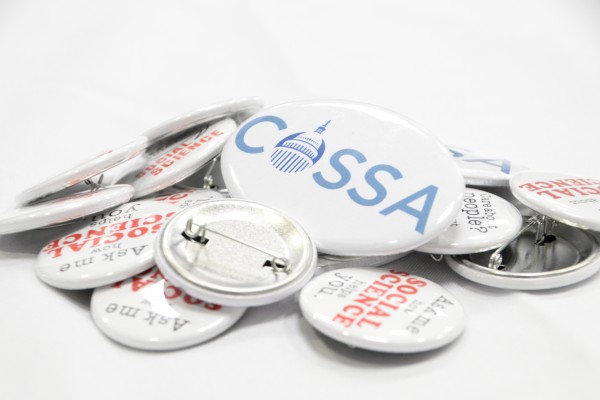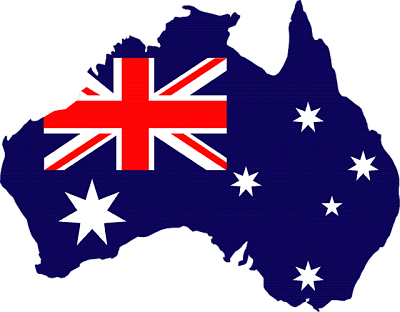COSSA Looks at the President’s Science Budget in Depth
On February 28, full details of the president’s fiscal year (FY) 2019 budget request for the National Science Foundation (NSF) were released. Preliminary details were unveiled on February 12 with the rest of the President’s FY 2019 budget.
President Trump’s request includes a total of $7.5 billion for NSF in FY 2019, which is flat with the FY 2017 enacted level (Note: FY 2018 appropriations have not yet been completed, so comparisons are made to the last enacted level). As previously reported, prior to enactment last month of a bipartisan budget deal to raise discretionary spending caps, the administration’s budget proposal for NSF was $5.3 billion, a nearly 30 percent cut to the agency. Unfortunately, the newly released details show that the additional funding associated with raising the caps would not be spread evenly across the foundation. Instead, the request seeks to reprioritize funds toward NSF’s Big Ideas initiatives at the expense of several existing programs and activities.
Of particular concern is the disproportionate treatment of the Social, Behavioral, and Economic Sciences Directorate (SBE) in the request, which would see a cut of 9.1 percent from FY 2017 (11.2 percent to its research and education activities). This is compared to the other directorates that would be held flat or cut by one or two percent.
However, there are some important nuances to note. First, in the administration’s original NSF request that would have cut the agency by almost 30 percent, each of the research directorates were treated equally; each was slated for roughly the same decreases:
| NSF Spending by Directorate (ORIGINAL REQUEST 2/12/18) | ||
| FY 2019 Request | Change from
FY 2017 |
|
| Biological Sciences | $526 million | -29.1% |
| Computer and Information Science and Engineering | $663 million | -29.2% |
| Engineering | $660 million | -29.1% |
| Geosciences | $585 million | -29.1% |
| Mathematical and Physical Sciences | $965 million | -29.2% |
It appears that when the additional funds were put on the table after the caps were raised, those funds were distributed disproportionately in order to prioritize the Big Ideas activities. In other words, while a quick read of the revised budget request shows that SBE was singled out—and it was—all directorates had been treated equally in the original budget. Once the “new money” from raising the caps was added
to the budget, the funding priorities shifted. While this doesn’t change the fact that SBE is being targeted for disproportionate cuts, it could signal that the situation for SBE may not be as bad as it could be.
So where, then, is funding being prioritized to? The NSF budget request takes a new approach for FY 2019 compared to past years. The agency states in a press release that “NSF would accelerate the progress of its ‘10 Big Ideas for Future Investments’ in FY 2019, dedicating funding and resources to high-priority areas that integrate multiple fields of science and engineering and create opportunities to partner with industry, private foundations, other federal agencies and the education sector.”
In a set of frequently asked questions about the FY 2019 budget, the agency states:
“NSF’s investment in the Big Ideas… is not a zero-sum game. The fundamental research underlying the Big Ideas has been supported through many NSF programs for a number of years, and in some cases, for decades. This budget request is a reflection of the changing model of science and engineering research today, which defies existing stovepipe thinking and encourages innovative approaches to research through leveraging resources across all fields of science [emphasis added].”
The FAQs further state that “NSF will continue planning budget levels for individual programs when the final FY 2019 budget is passed,” suggesting that perhaps the funding proposals included in the budget are not the final plan.
Of course, it would not be possible to support these new activities with just the $25 million cut from SBE. Other portions for the NSF budget would see significant reductions, such as the major facilities account (-$128 million or -57.5 percent) and the agency operations account (-$48 million or -12.7 percent), which accounts for the completion of the NSF headquarters move in FY 2018.
NSF’s 10 Big Ideas
As noted, funding is prioritized in the budget request to kick-start NSF’s 10 Big Ideas. The budget states, “Collaboration and convergence are required across NSF in order to achieve the agency’s mission and support the maximum number of researchers. No longer is any one research directorate at NSF the sole NSF funder of science in a given field [emphasis added].”
The budget would invest a total of $282.5 million across the 10 Big Ideas in FY 2019. This includes $30 million for each of the six research-focused Big Ideas:
- Harnessing the Data Revolution for 21st-Century Science and Engineering ($30 million)
- Navigating the New Arctic ($30 million)
- The Future of Work at the Human-Technology Frontier ($30 million)
- The Quantum Leap: Leading the Next Quantum Revolution ($30 million)
- Understanding the Rules of Life: Predicting Phenotype ($30 million)
- Windows on the Universe: The Era of Multi-Messenger Astrophysics ($30 million)
The remaining four Big Ideas are “process” ideas, and would receive funding in FY 2019 as well:
- Growing Convergence Research ($16 million)
- NSF INCLUDES ($20 million)
- Mid-Scale Research Infrastructure ($60 million)
- NSF 2026 Fund ($6.5 million)
In a major departure from past budgets, the FY 2019 request outlines a new structure NSF will utilize for organizing its research investments. New Convergence Accelerators are introduced as “time-limited structural entities intended to leverage external partnerships to facilitate convergent and translational activities in areas of national importance.” The request includes $60 million in FY 2019 for two Convergence Accelerators dedicated to two of the research-focused big ideas (in addition to the $30 million each would receive as noted above): Harnessing the Data Revolution and the Future of Work at the Human-Technology Frontier. The expectation is that this investment will “catalyze an additional $40 million in investment by external partners, including the private sector, other federal agencies, and international funders.” Funding for the Convergence Accelerators will be managed through NSF’s Office of Integrative Activities, not by the individual Directorates that are tasked with leading the various Big Ideas.
Additional details on the President’s request for the Social, Behavioral and Economic Sciences Directorate and the Education and Human Resources Directorate follow.
NSF’s FY 2019 budget request can be found at: https://www.nsf.gov/about/budget/fy2019/toc.jsp.
Directorate for Social, Behavioral and Economic Sciences
As noted above, the President’s budget includes $246.19 million for the Social, Behavioral, and Economic Sciences Directorate (SBE), which is $24.7 million or 9.1 percent below the enacted FY 2017 level. The request would provide flat funding for the National Center for Science and Engineering Statistics (NCSES), the federal statistical agency housed within SBE, at $51.19 million. Therefore, the actual cut to SBE’s research and education programs would be 11.2 percent.
Interestingly, the proposed cuts to SBE’s individual divisions are nearly identical to the amounts proposed by the Trump Administration in the FY 2018 budget request, further signifying that the Administration’s positions on base SBE funding have not changed. The divisional funding levels are included in the below table.
Directorate for Education and Human Resources
The budget request proposes flat funding for the Education and Human Resources Directorate (EHR) at $873.4 million. However, significant funding shifts are proposed within EHR’s divisions and programs. Most notably, the budget prioritizes the Big Idea that EHR is tasked with leading – NSF INCLUDES.
The Division of Research on Learning in Formal and Informal Settings (DRL) would receive a total of $202.98 million under the President’s budget, a cut of $19.6 million or 8.8 percent below FY 2017 levels. Within that budget, EHR Core Research activities, the Advancing Informal STEM Learning program (AISL) and the Discovery Research Pre K-12 (DRK-12) program would be held roughly flat, while STEM + Computing (STEM+C) Partnerships program would see a 37 percent cut. Instead, DRK-12, AISL and ECR would be tasked with expanding their portfolios to support computer science teaching and learning.
The Division of Graduate Education (DGE) would receive a total of $258.63 million in FY 2019, a decrease of $13.6 million or 5 percent below FY 2017. Each of the functions and programs within DGE would be cut or held roughly flat, with the exception of the NSF Research Traineeship program, which would see a 33 percent increase.
The Division of Undergraduate Education (DUE) would receive a total budget of $224.7 million in FY 2019, a cut of $4.5 million or 2 percent below FY 2017 levels. Activities across the division would see cuts or held flat. The Improving Undergraduate STEM Education (IUSE): Hispanic Serving Institutions (HSI) Program, which was funded for the first time in FY 2017 and administered through the Office of Integrative Activities, would be added to the DUE budget in the amount of $10 million.
In contrast to the other EHR divisions, the Division of Human Resource Development (HRD) would be increased by 25.2 percent under the President’s proposal. Funding would be prioritized for the ADVANCE program, which would grow from $1.53 million in FY 2017 to $18 million in FY 2019. The NSF INCLUDES Big Idea would grow from $3.6 million in FY 2017 to $20 million in FY 2019.
For the full COSSA breakdown of the budget request, plus a closer look at the Big Ideas themselves, see the entire COSSA document here.



























































































